By Louise Vas, with the guidance of Yogananth Andiappan
Poses demonstrated by Lin Fa Sahery Tse
In this month’s featured pose, we push the limits and reach our extremes with Thiruvikramasana. This is an advanced pose with 4-directional movement – we are inflatable games extending the body up while ensuring we are grounded, and we open to both left and right sides to find the perfect balance.
This pose is sometimes referred as “Trivikramasana”, and sometimes in English as “Lord Shiva’s terrific dance pose”.

WARM-UP
Shoulder Stretch
1. Stand with the feet hip-width apart.
2. Bring the right hand to touch the upper back, while the left hand holds the right elbow.
3. Inhale and on exhale, pull the right elbow, towards the back of the head. Keep the head in the neutral position.
4. Hold for a few normal breaths, release and do the same on the opposite side.

Lateral Stretch
1. From the previous shoulder stretch, inhale and on exhale, arch to the left side. Keep the arms in the same position and the shoulders aligned with the hips, avoiding any twisting or turning.
2. Hold the pose for a few light breaths. Come back to standing, change the arm position and do the lateral arch to the right side.
Benefit: Extends the oblique muscles and improves internal shoulder rotation.

Hips and Hamstring Stretch
(Wall support)
1. Stand sideways against a wall, leg-length distance and hands on the waist.
2. Bring the right leg to the wall, with the heel around the same level as the waist. Roll the right leg outwards to make the toes pointing upwards.
3. Keep the left leg straight and hold the right ankle. Keep the chest open and the stand tall.

4. Extend both arms to shoulder level.
5. Inhale and on exhale, arch sideways to the right (towards the wall), with the aim of bringing the right shoulder in front of the right thigh.
6. Keep the arms straight and slowly look up to the left hand.
7. Hold for a few breaths, and come back to standing. Bend the right knee and push gently against the wall to safely bring the leg down.
8. Turn around and repeat the above on the other leg.
Benefit: Stretches the hamstrings and improves hip opening.
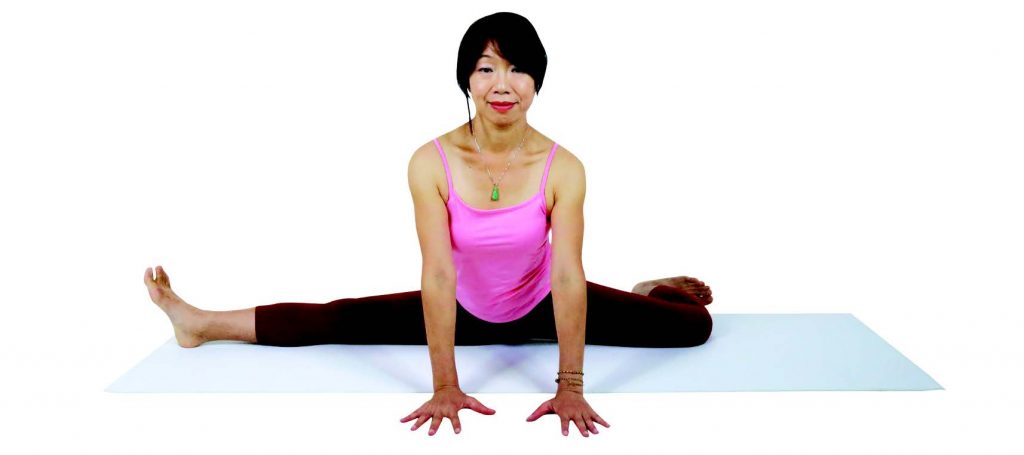
Uthana Mandukasana / Frog Pose Variation
1. Start in tabletop position with the hands and knees on the floor.
2. Extend the right leg sideways, with the heel on the floor and toes pointing upwards.
3. Inhale and on exhale, slide the right leg sideways to lower the hips and the right knee, closer to the floor.
4. Aim to have the hips resting on the floor. Roll the right leg outwards, and keep the left lower leg in line with the knee.
5. Keep most of the body weight on the hands and avoid hunching the back. Tilt the hip forwards to deepen the stretch in the inner thigs and hips.
6. Hold the pose for a few breaths. Come out of the pose by slowly bending the right knee.
Benefit: Extends the inner thigh muscles (adductors) and
improves hip rotation.
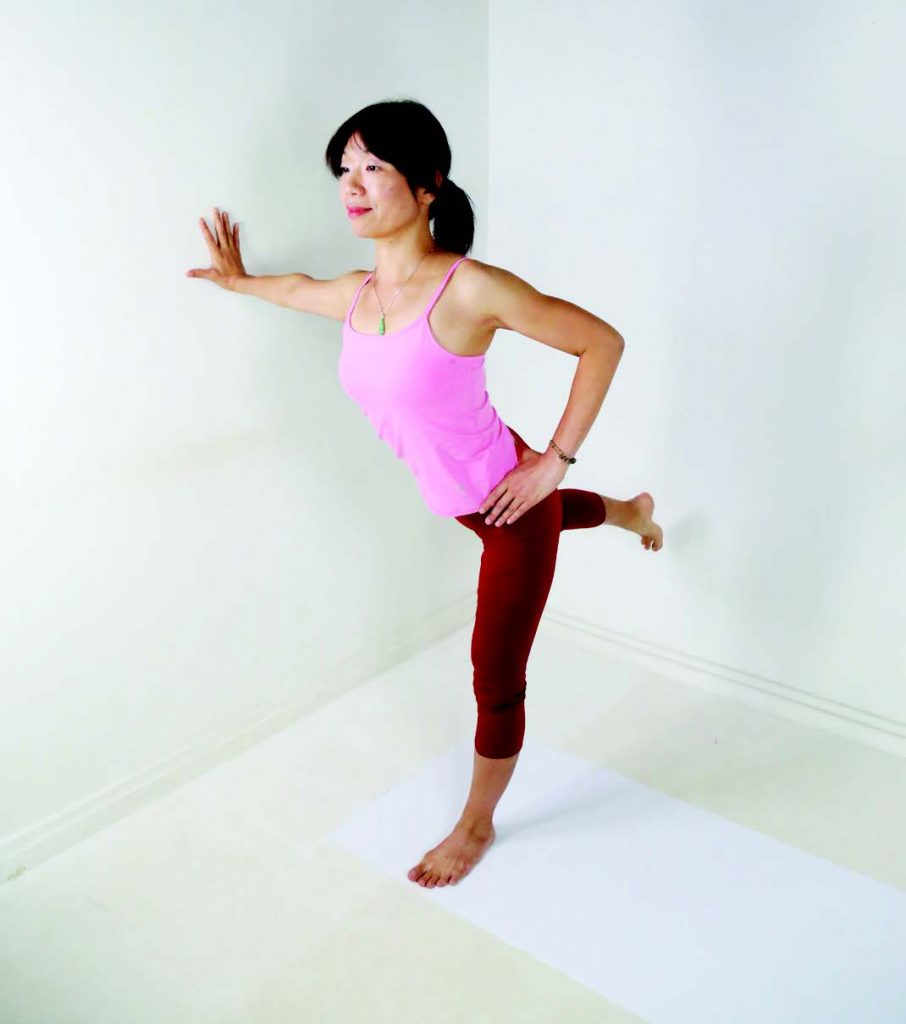
Leg Swinging movement
1. Stand sideways, arm-length’s away from a wall.
2. Bring the right hand flat on the wall with the arm at shoulder level, while the left hand is on the waist.
3. Keep the left leg straight and grounded. Do a swinging/ kicking movement with the right leg.
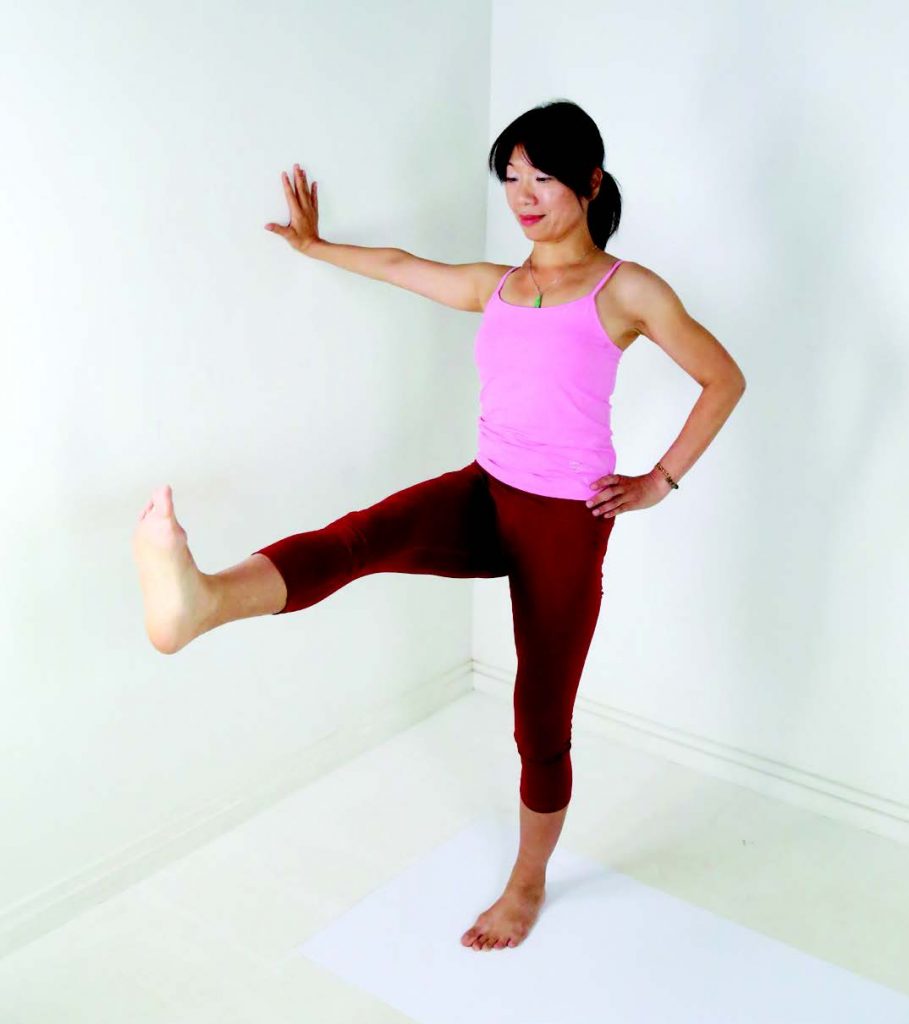
4. As the leg goes back, allow the torso to lean forwards. As the leg kicks forward, lean back. The foot does not touch the floor in this movement.
5. Repeat several times; turn around and repeat the practice on the left leg.
Benefit: Improves the hip tilting movement for hip flexion and extension.
STEPS
1. Start in a standing position with the legs together.

2. Bend the right knee and hold the heel with the right hand.

3. Raise the right leg and hold the calf, aiming to bring the thigh on the upper arm. The left hand reaches back for the right foot, holding the toes.

4. Use the right hand to raise and straighten the leg up with the knee close to shoulder level, while the left hand slides down to the ankle for a better grip.

5. Bring the right leg behind the right arm and straighten the leg. Keep the neck long, gently pushing the left arm back to keep the head in neutral position.

6. From step 5 above, hold the right heel and focus on lengthening the body upwards.

FINAL POSE
Maintain the balance on the left leg. Extend the rightarm to shoulder level and keep the gaze on a single point.
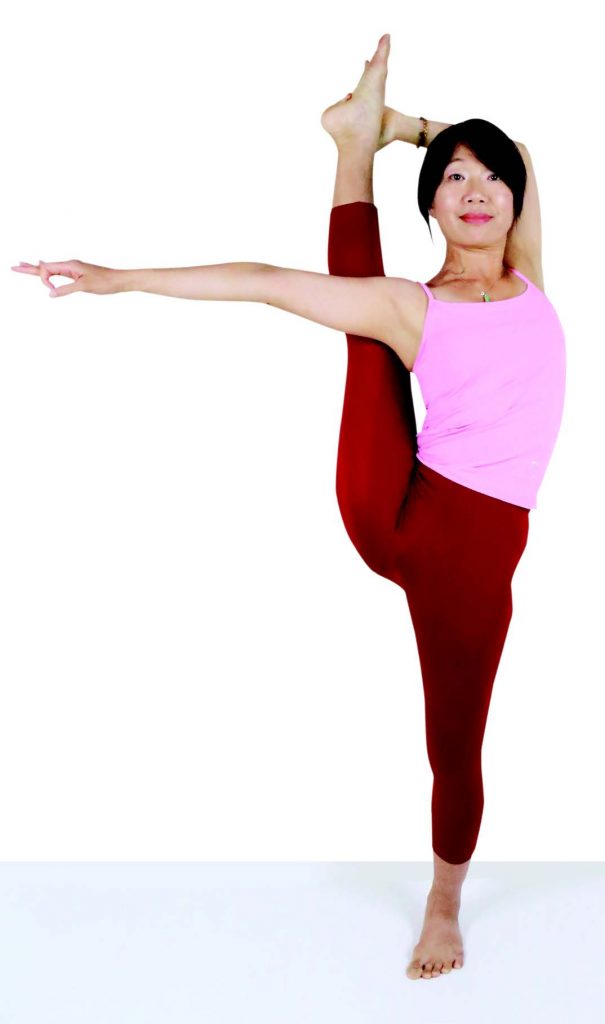
VARIATION
There are many ways an asana can be performed or interpreted depending on the practitioner, and classic Hatha Yoga text suggests that there are over 8 Million poses. For Thiruvikramasana, below are some of the available variations.
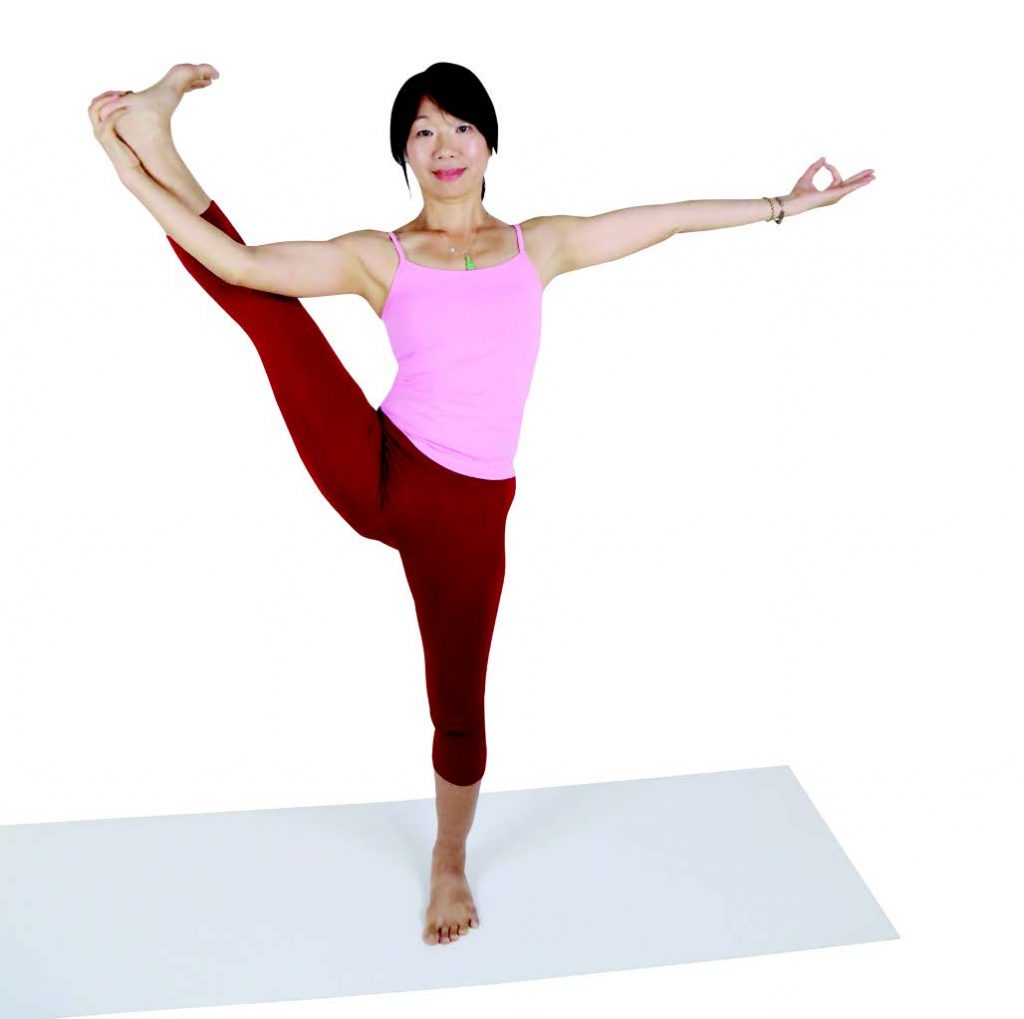
Hold the right heel and keep the elbow bent, while the left arm extends sideways at shoulder level. Left hand is in chin mudra (index finger and thumb touching) while holding the pose.
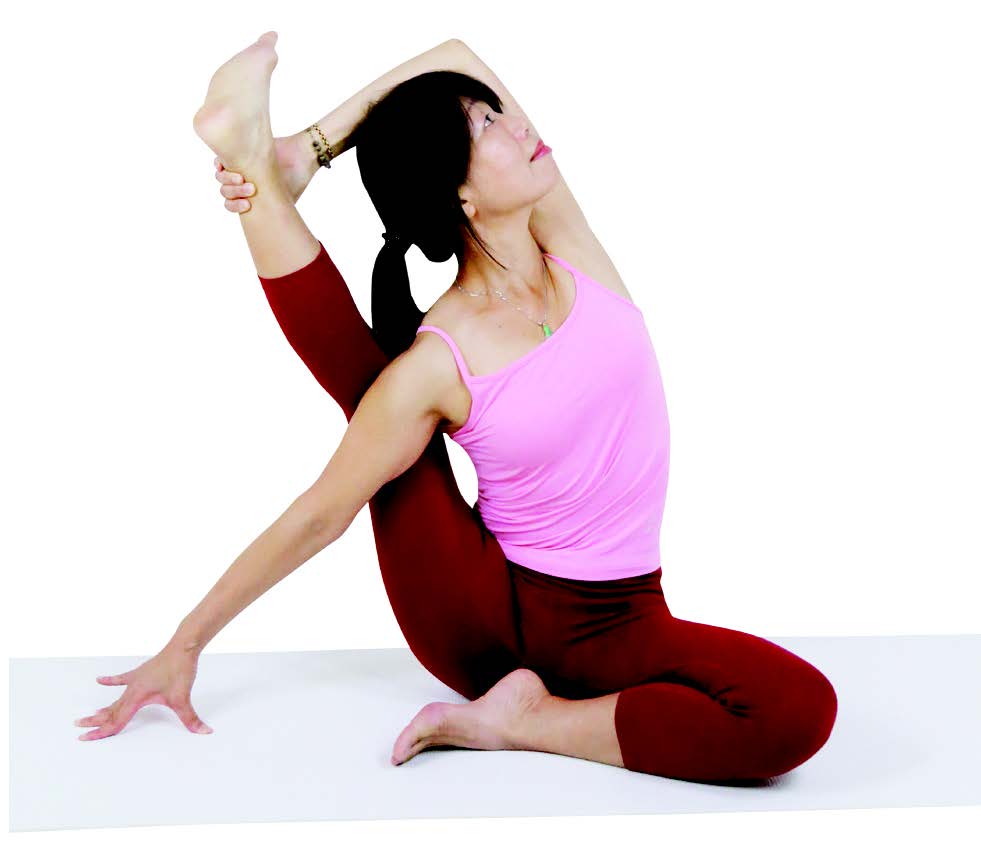
Surya Yantrasana / Sundial pose is the closest variation of this pose while seated. Sit on the floor with the left knee bent, the heel close to the perineum. Lift the right leg and hold the heel with the right hand. Straighten the right leg, then the left hand reaches back to hold the right ankle. The right hand slowly reaches to the floor to keep the balance. Aim to keep both sitting bones on the floor. Extend the left side of the body and look towards the left side.
MODIFICATION
Below modifications are available to different practitioners.
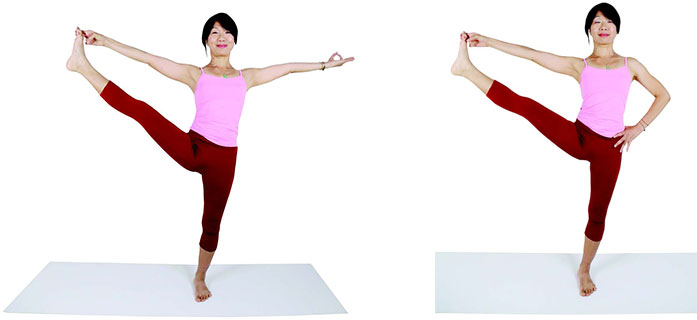
For those with limited hamstring extension and internal shoulder rotation
Hold the right big toe and focus on extending the right leg sideways, while maintaining the left leg straight.
The left arm can either be extended (for better chest opening) or holding the waist.
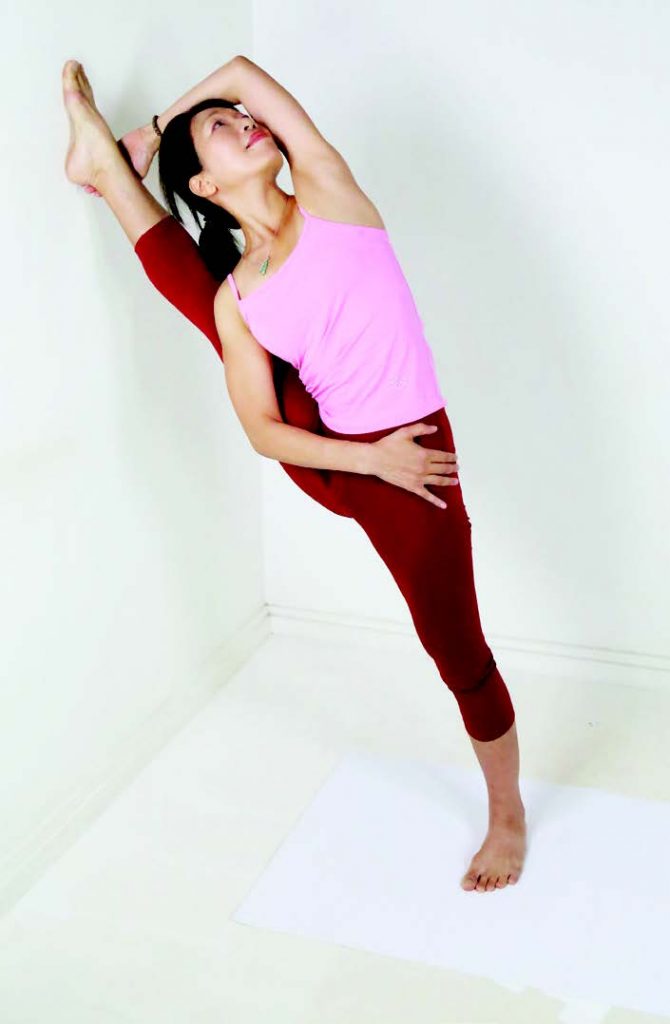
For those with limited harmsting flexible and balance
Practice against the wall. Start by standing sideways against the wall. Raise the leg to a comfortable height without straining the hamstrings and the inner thigh. Focus on the shoulder nearest the wall to go forward of the raised leg, to improve the extension of the oblique muscles. The free hand, reaching back for the opposite foot, adds depth to the oblique extension by rotating the shoulders
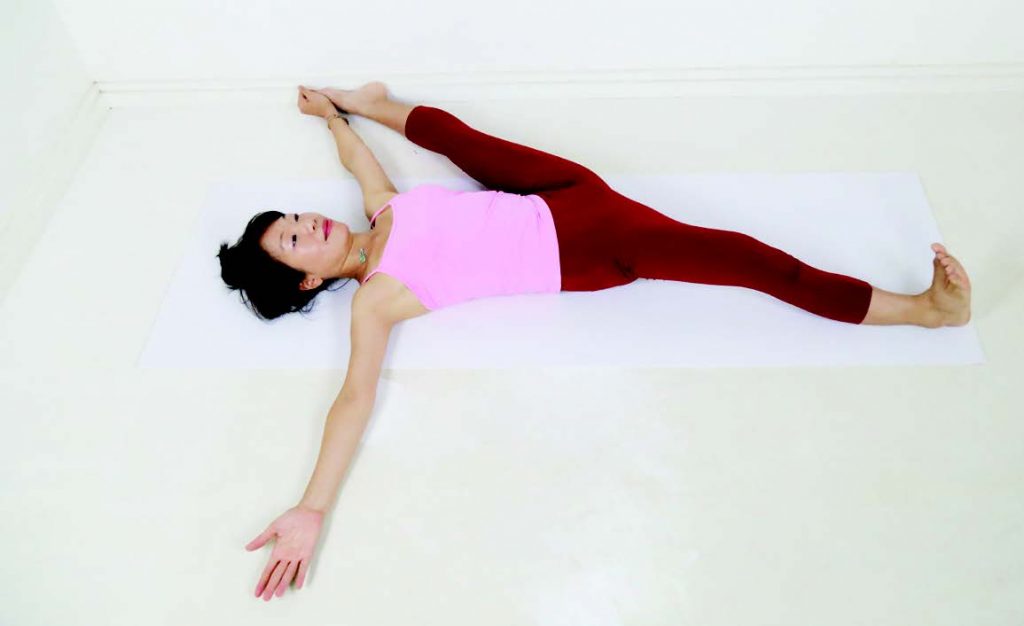
For those challenged by balance
The first variation can also be practiced by lying down. Since balance has been removed as a challenge, the focus is on the hamstring extension. To stretch the calf of the free leg, flex the ankle and point the toes upwards.
NEUTRALIZING MOVEMENTS
Neutralizing poses are important for long-term injury prevention; it allows the body to return to its neutral position.
Be aware of pressure alert points and listen to your body – do neutralizing movements after slowly coming out of the pose.
As this is a deep leg extension and hip flexion pose, practice the below to re-centre and relax the concerned muscles.
Vyagrasana / Tiger Pose
With the hands and knees on the floor and the back in its neutral shape, lift and straighten the right leg above hip level, pointing the toes. Press the palms on the floor and arch the back; raise the chin and look up. Hold for a few regular breaths; bring the right knee to the floor and repeat the pose on the opposite side.

Calf Stretch
From tabletop position, extend the right leg back and tuck the toes. Inhale and on exhale, press the heel back and keep the leg straight. Inhale and move the heel forwards, exhale and press the heel back. Repeat for 3 times (same side) and change legs to stretch the left leg.
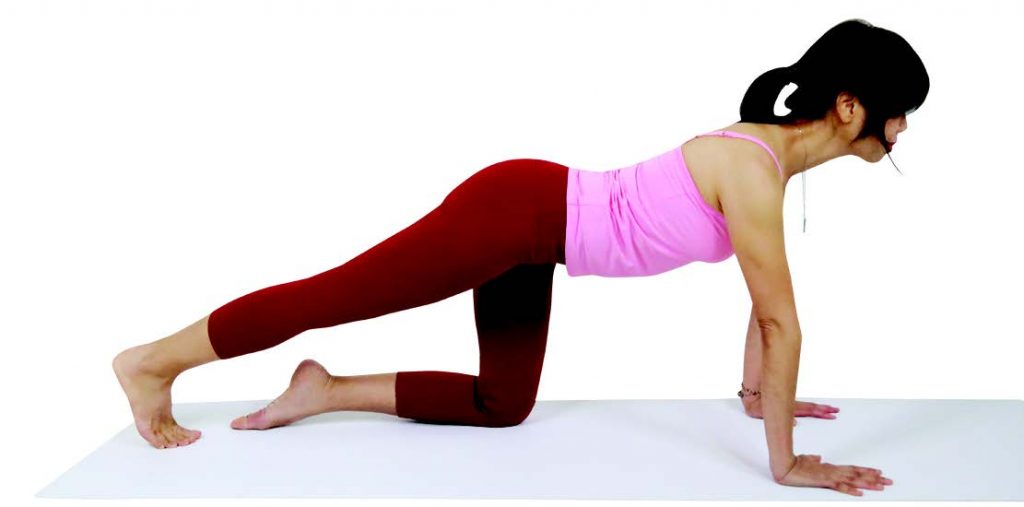
COUNTER POSE
The below counter poses will relieve any tension created in the torso and hip area.
Sphinx Pose variation
Lie down on the abdomen with the toes pointing and legs extending back. Bring the elbows to the floor in line with the chest. Inhale and on exhale, press the elbows to the floor and lift the chin and chest, consciously arching the upper, middle and lower back. Hold the pose and slowly raise the elbows to release the support from the arms.
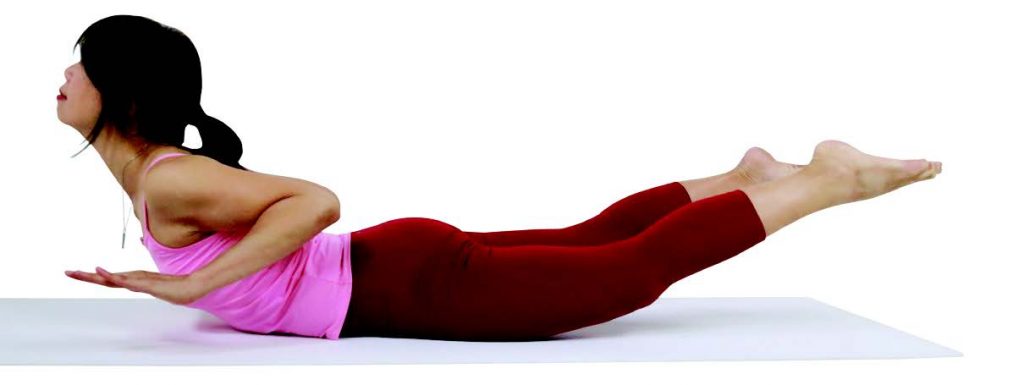
Salabasana / Locust Pose variation
Lie down with the chin and abdomen on the floor. Bring the hands to the sides of the body, in line with the chest
– the arms are close to the body with the elbow pointing upwards. With the toes pointing back, inhale and on exhale, lift the right leg into a 45-degree angle. Engage the thigh and extend the right leg upwards, allowing the hip to come off of the floor. Hold the pose for a few breaths and repeat the pose on the opposite side.
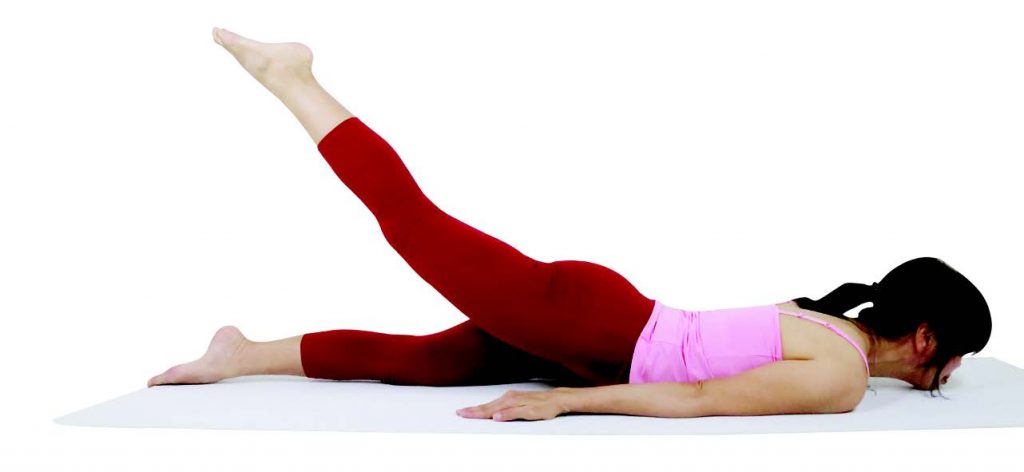














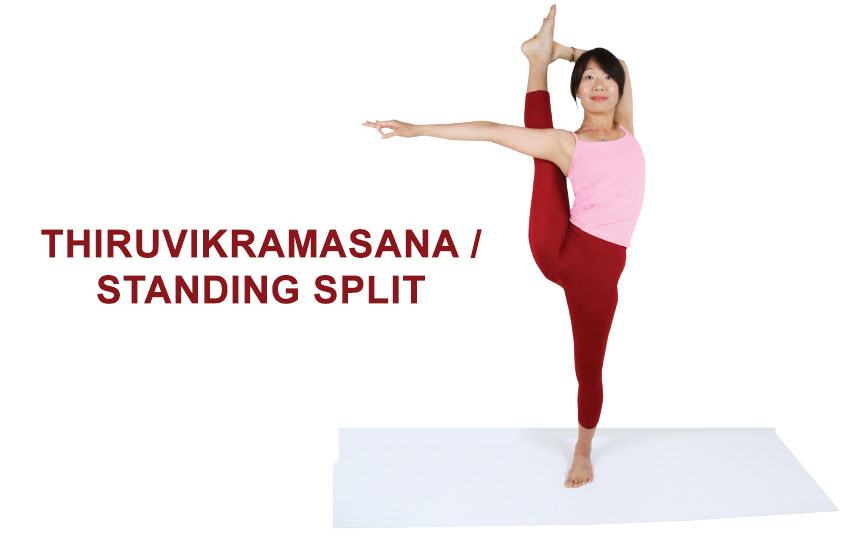



 Other
Other